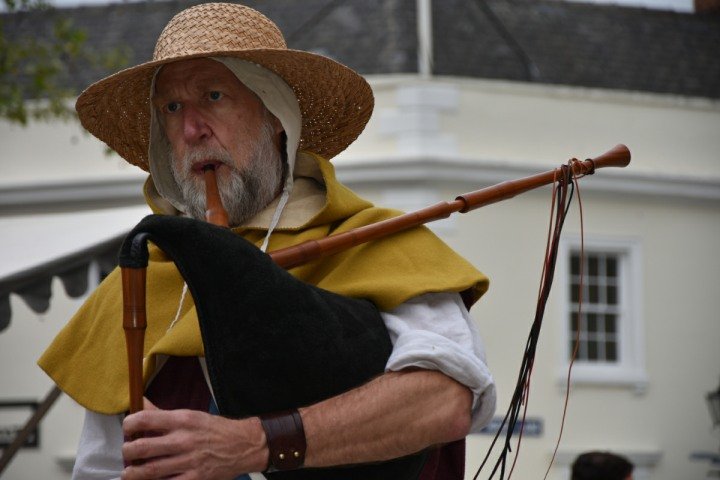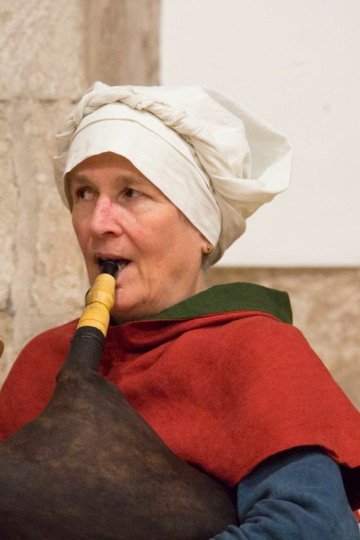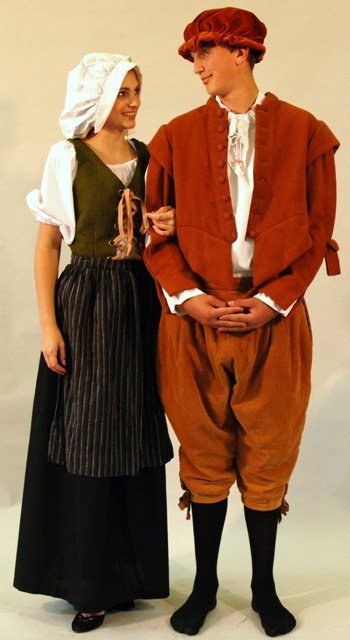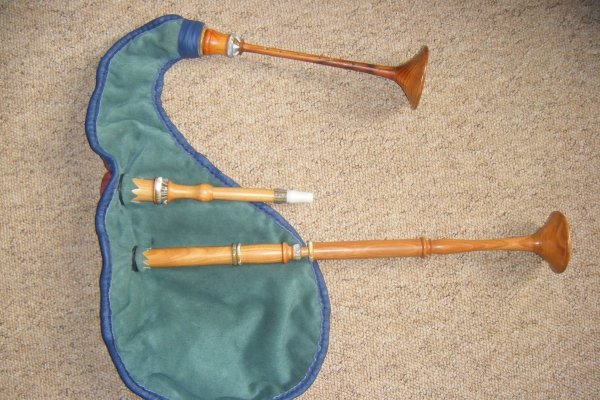
Standing before us were two members of de Mowbray’s Musicke band; the couple were dressed in costumes characteristic of the Tudor period and surrounded by a variety of reproduction musical instruments typical of that time. The couple explained that music was an important part of Tudor life with the landed gentry employing musicians to play in their fine houses, whilst travelling musicians entertained those in the towns and villages. Interestingly, early 16th century musical instruments were quite loud and often played outside every evening as a signal for people to ‘cuevrefeu’ ie, put out their fires and retire; from this French word we get our word curfew.

After playing their first tune, each member then explained in detail what clothes a typical Tudor musician might wear whilst slowly disrobing in front of us. Society at that time was strictly stratified even to the point whereby there were laws which dictated what could and couldn’t be worn; this ensured that everyone ‘knew their place’. One law even specified that on Sundays, all men except noblemen must wear a woollen cap. Whilst the rich wore satin, silk and velvet decorated with jewels and embroidery, the poor wore more simple clothes made mostly from coarse woollen cloth.

A woman’s dress was made of two parts, a bodice or corset-like garment and a skirt; sleeves were tied on with leather laces and could be detached and, under their dresses, they either wore silk or wool stockings depending on their status, a nightie-like garment called a shift made of linen and no knickers. Tudor men wore short trouser-like garments called breeches and tight fitting jackets called doublets. A jerkin was worn over the doublet however, many workingmen wore a loose woollen tunic rather than a doublet (which was easier to work in) and a leather jerkin on top. Men also wore stockings or woollen socks called hose. All Tudors wore hats of some kind although poor women wore a linen cap called a coif and, everyone wore a ruff, the quality of which signalled the wearer’s importance.

The presentation was interspersed with a number of musical interludes as the couple played tunes which flaunted the sounds and atmosphere of Tudor England. Their instruments included a selection from the easily recognised recorder family, the very curiously curved crumhorn, some extremely loud shawms and culminated with the English bagpipes.

The couple justly pride themselves on their authentic portrayal of Tudor musicians and the historical accuracy of their music, instruments and costumes.



Leave a Reply
You must be logged in to post a comment.